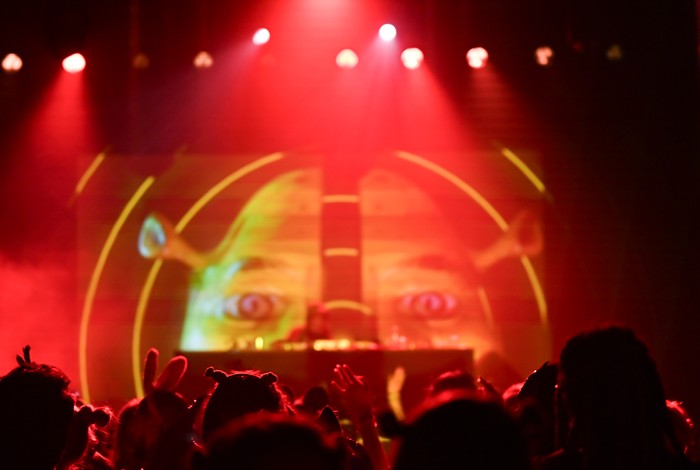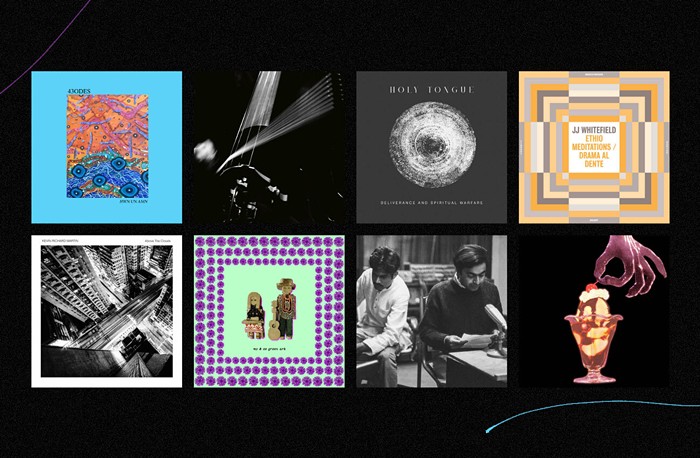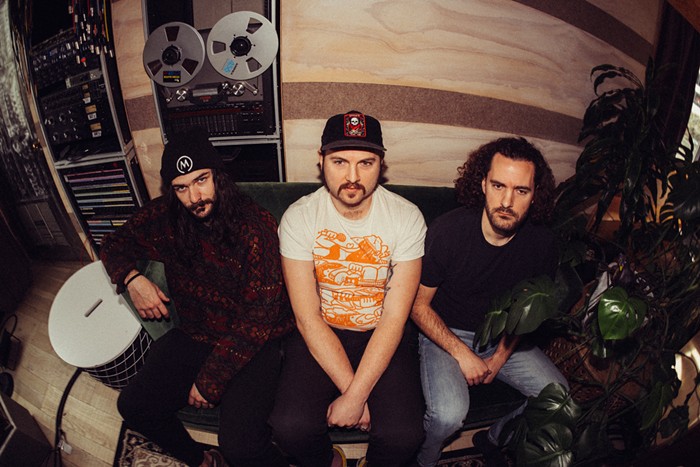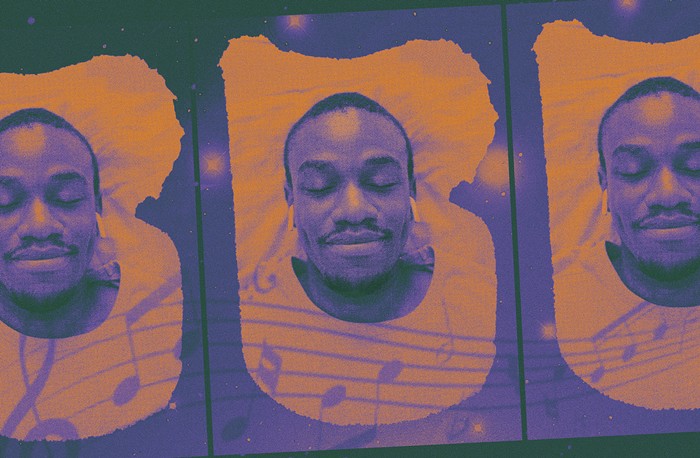At Klaxons' Seattle debut at the Crocodile in April, the few Hypercolor-clad believers and foaming-at-the-mouth music critics in the crowd (guilty) were expecting the new-rave myths of the NME. But what they got was more mundane: four lads on guitar, bass, drums, and keyboard wearing jeans and T-shirts, blowing through a raucous, boozy set with little of the layers or nuance of their debut album, Myths of the Near Future. In other words: a rock band.
"There are nights when we're a pop band, there are nights we're kind of a psych band, and then there are nights you can catch us when we're a rock band," says James Righton, the fresh-faced keyboardist/vocalist for the chimerical UK band. Righton is at home in London, doing "just cracking" as he prepares to hop a tour bus for Switzerland. "The other day we played in Norway, and they think we're a hardcore band basically."
If Klaxons can seem like all things to all people, it's because they draw on an unusually wide array of influences, both musical and otherwise. The much-discussed Myths of the Near Future incorporates punk's frenzy and distortion, glam's glittering excesses, prog's ren-fair futurist classicism, and even faint echoes of northern soul (the wordless, miasmatic pre-chorus of their biggest UK top 10 hit, "Golden Skans"). Somehow, Klaxons synthesize these elements into unique pop hybrids on record. If their shows are unpredictably varied—punk one night, prog the next—it's not because they have a repertoire of songs from each genre so much as a single set of songs that can swing off in any direction given the mood.
"I listen to a lot of Todd Rundgren, Utopia, and Zappa," says Righton. "Simon [Taylor-Davis, the band's guitarist] has been listening to obscure American indie bands that no one's heard of—before they've even formed, he's heard of them usually. He just got back from checking out bands in Portland, Oregon [home to Klaxons's West Coast tour mates Fist Fite]. Jamie [Reynolds, on lead vocals and bass] has been listening to a lot of minimal techno."
The band have some unabashed pop tendencies as well. They recently covered Justin Timberlake's "My Love" as part of a BBC Radio session.
"We might also do a track with Dr. Dre," Righton says casually. "It's getting more and more likely. We also heard that Kanye West is a big fan."
Of course the musical movement with which the band is most closely associated is rave, or rather new rave, that half joke of a genre that the band have lately taken pains to distance themselves from. The association is understandable. Klaxons perform covers of a couple 1990s club jams (Grace's "Not Over Yet" and Kick Like a Mule's "The Bouncer"), they arrived wrapped in neon Paper Rad blankets, and their singles have been reimagined for the discotheques by some of the leading lights of electro (including SebastiAn, Crystal Castles, Soulwax, Digitalism, and Myths producer James Ford's Simian Mobile Disco). Still, the new-rave tag is a source of seemingly endless frustration for the band.
"As soon as we heard people talking about "new rave" we wanted nothing to do with it," Righton says. "You just react against things as soon as people try to label you. And if people don't like it, then they don't buy our records and we go back to our normal jobs."
But if Klaxons aren't interested in being the standard-bearers for new rave that NME made them, then they're equally uninterested in being a regular rock band.
"When we started, it was the case, and it still is, that every band that was around wrote about the same things: girls, work at 9-to-5 jobs, living in small towns. And writing doesn't have to be like that. It can be anything. Just like the music you make—the music can be anything, the words can be anything."
Klaxons take that lyrical freedom to fantastic, even nonsensical heights on Myths of the Near Future, singing about cyclopes and centaurs, and raiding the library for Aleister Crowley, J. G. Ballard, and Thomas Pynchon references—things that, according to Righton, don't usually belong in pop music. But this studied amalgam approach is central to Klaxons' mystic futurist sounds and cut-and-paste lyrical visions.
"I think all the best music is about collage and about synthesis of a few ideas," he says. "With the best bands, you can hear the individual members pulling in different directions but somehow it makes a cohesive whole. That's what chemistry is, innit? A group of people get together and between them they create a collage of ideas." ![]()



















